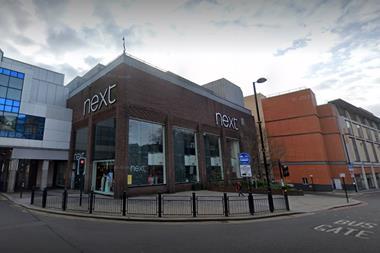Disruption often has a negative connotation, but it can have a positive impact.

The likes of Airbnb and Uber have revolutionised the habits and psyche of the consumer. Last month, when Uber set out its vision of urban transportation – flying taxis carrying customers from rooftop to rooftop – it confirmed that the UK’s high streets must seriously consider looking up.
The decay of our high streets is well documented – a stuttering economy and acute spike in online retail have affected footfall and dramatically altered consumer spending patterns.
Spaces above shops, once used for stock and administration, have become obsolete and are consequently haemorrhaging capital value. In their bid for survival, retailers are facing the challenge of repurposing assets. So what is the solution?
Airspace – unused space above residential, commercial and public buildings that can accommodate additional units – could help reshape the high street and revive the evolving retail sector.
Until recently, town centres and high streets had very little recreational space as the focus was on traditional retail. But as we move from shopping as a necessity to shopping as an experience, airspace developments could help repurpose existing space.

Airspace above shops could accommodate increasingly popular ‘competitive socialising’ concepts such as crazy golf, trampoline parks and climbing walls, as well as bars and restaurants with skyline views.
Unused retail spaces could be used to store and distribute goods for online retailers. With a shortage of industrial space, retail units in well-populated areas could provide excellent last-mile logistics space to ensure fast deliveries via drones. Given Uber’s futuristic stance on travel, unused retail assets could become transport hubs and support the way we access high streets that have become experiential hubs.
The high street has traditionally been the main artery running through a community, and community centres play a key role in fostering a sense of belonging among local residents.
Traditionally, these centres have been at street level near small urban parks, cafés and libraries, but the thinking about their location is changing. Could rooftop community centres and outdoor recreational space be equally effective? Applying the concept to the roof while still providing wheelchair access could make these facilities diverse and more secure, ensuring they are used properly by those who need them most.
With the UK facing a severe housing shortage, creating homes on top of shops should also be a focus. A recent study found that more than 25,000 homes could be accommodated atop commercial and retail property in central London alone. Homeowners look for a good location, amenities and connectivity. High streets generally meet all these criteria. And as high streets become destinations, they will meet the needs of those living there and create micro-communities.
Building up does not automatically mean creating monstrous skyscrapers and it certainly does not mean the end of the high street. With a sensible approach that serves the local community, airspace development could have a dramatic impact on our fledgling high streets – bringing value to property owners and curating experiences that bring consumers back time and time again.
Val Bagnall is managing director of Apex Airspace






























No comments yet